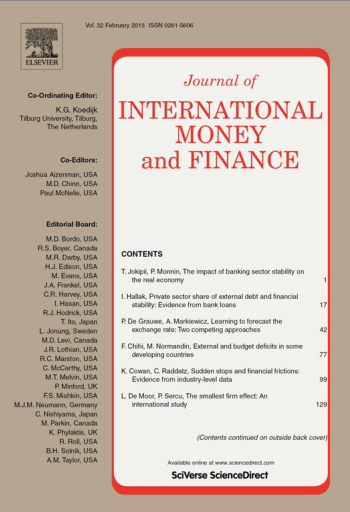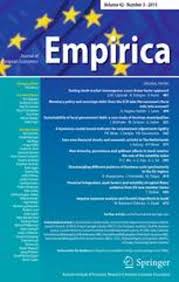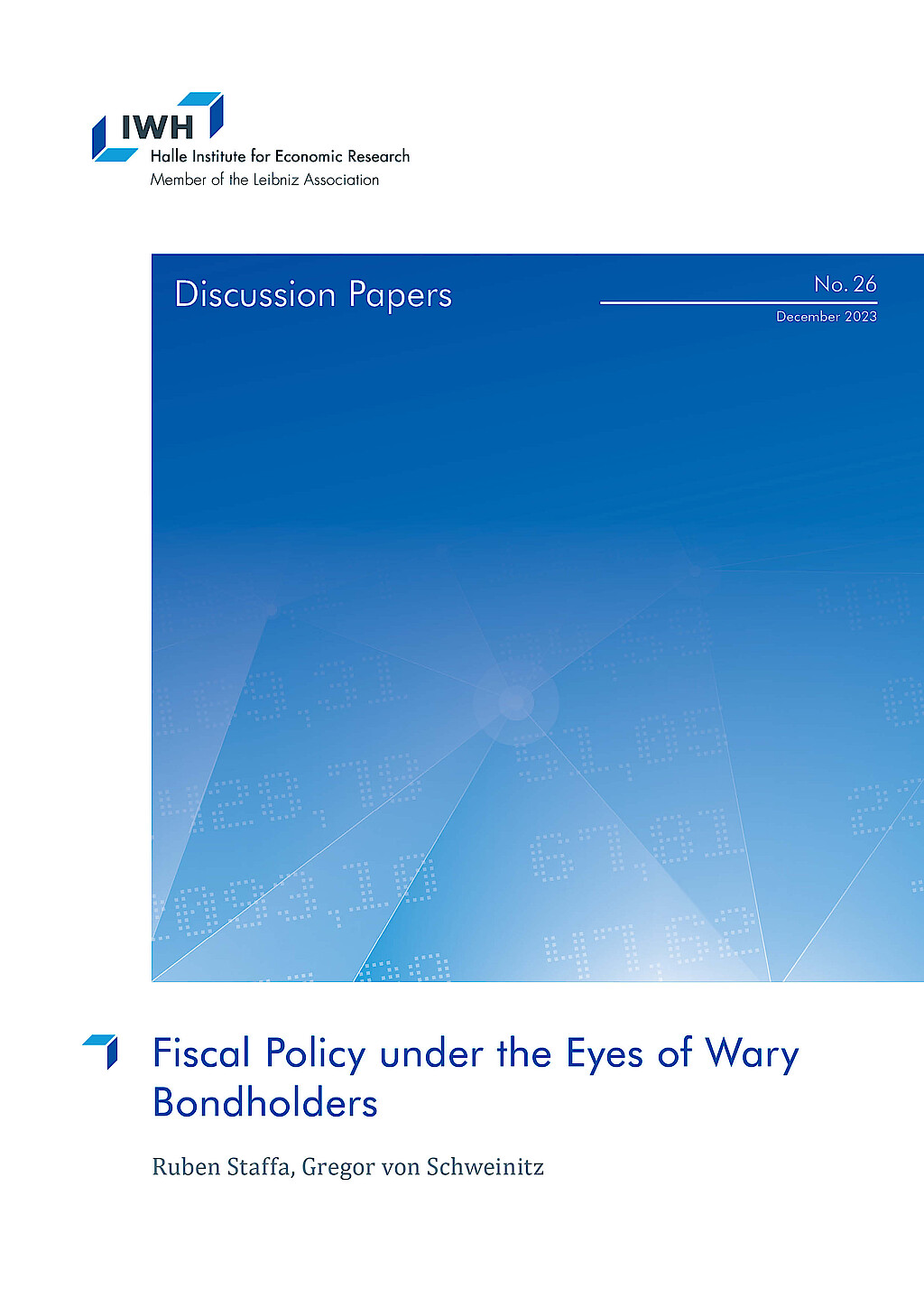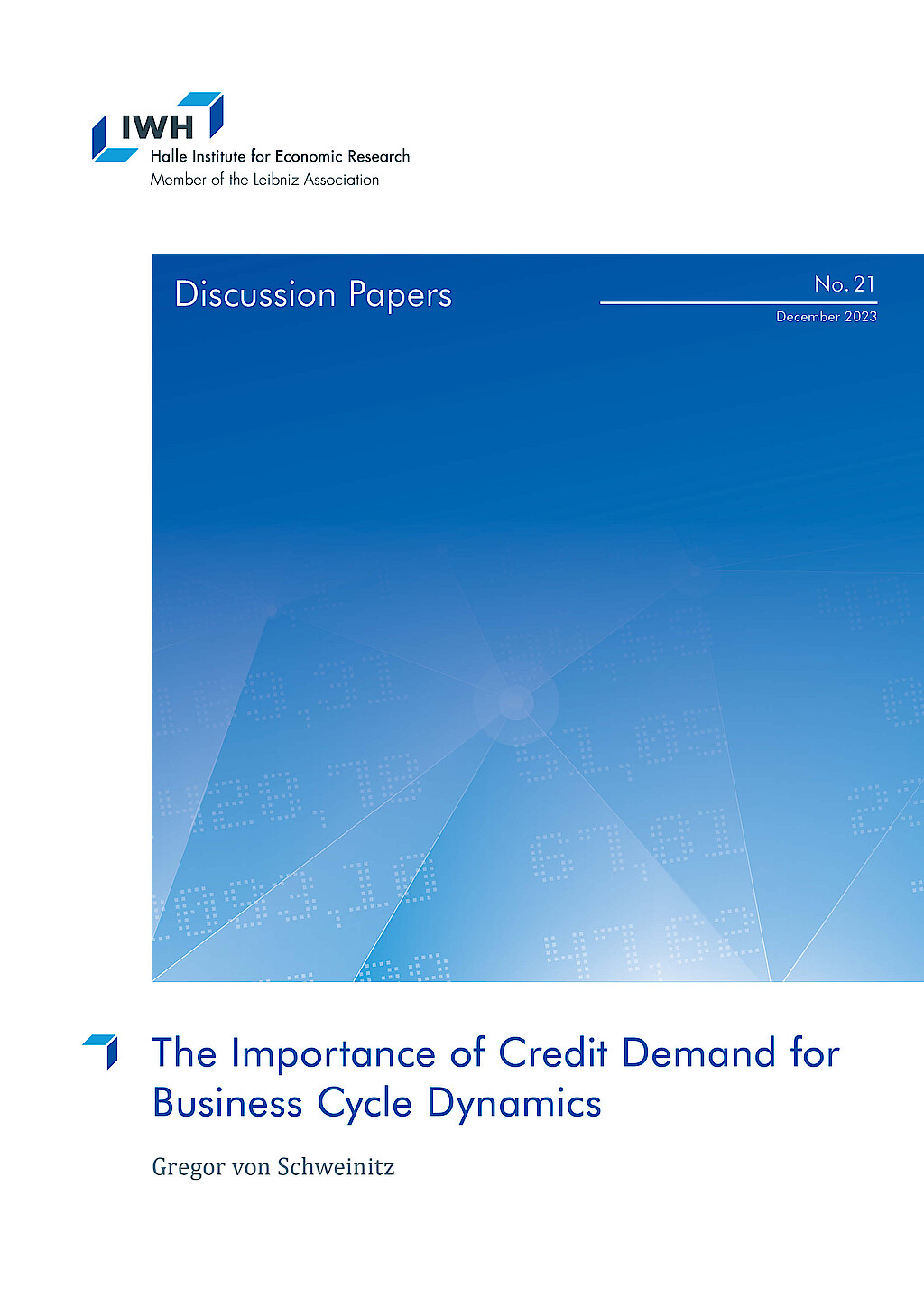Volatilität, Wachstum und Finanzkrisen
Diese Forschungsgruppe analysiert die Entstehung von Instabilitäten im Finanzsystem und die realökonomischen Konsequenzen von Finanzkrisen. Dabei werden kausale Reaktionen gesamtwirtschaftlicher Größen auf makroökonomische Schocks identifiziert. Frühwarnmodelle beschreiben das zyklische Auftreten von Vulnerabilitäten im Finanzsystem.
IWH-Datenprojekt: Financial Stability Indicators in Europe
Forschungscluster
Finanzresilienz und RegulierungIhr Kontakt

- Abteilung Makroökonomik
PROJEKTE
01.2022 ‐ 12.2023
Sovereign Risk Shocks
Deutsche Bundesbank
05.2017 ‐ 09.2019
Frühwarnmodelle für systemische Bankenkrisen: Der Effekt von Modell- und Schätzunsicherheit
Deutsche Forschungsgemeinschaft (DFG)
01.2018 ‐ 12.2018
International Monetary Policy Transmission
Deutsche Bundesbank
Referierte Publikationen

A Comparison of Monthly Global Indicators for Forecasting Growth
in: International Journal of Forecasting, Nr. 3, 2021
Abstract
This paper evaluates the predictive content of a set of alternative monthly indicators of global economic activity for nowcasting and forecasting quarterly world real GDP growth using mixed-frequency models. It shows that a recently proposed indicator that covers multiple dimensions of the global economy consistently produces substantial improvements in forecasting accuracy, while other monthly measures have more mixed success. Specifically, the best-performing model yields impressive gains with MSPE reductions of up to 34% at short horizons and up to 13% at long horizons relative to an autoregressive benchmark. The global economic conditions indicator also contains valuable information for assessing the current and future state of the economy for a set of individual countries and groups of countries. This indicator is used to track the evolution of the nowcasts for the U.S., the OECD area, and the world economy during the COVID-19 pandemic and the main factors that drive the nowcasts are quantified.

Fiscal Policy and Fiscal Fragility: Empirical Evidence from the OECD
in: Journal of International Money and Finance, July 2021
Abstract
In this paper, we use local projections to investigate the impact of consolidation shocks on GDP growth, conditional on the fragility of government finances. Based on a database of fiscal plans in OECD countries, we show that spending shocks are less detrimental than tax-based consolidation. In times of fiscal fragility, our results indicate strongly that governments should consolidate through surprise policy changes rather than announcements of consolidation at a later horizon.

The Appropriateness of the Macroeconomic Imbalance Procedure for Central and Eastern European Countries
in: Empirica, Nr. 1, 2021
Abstract
The European Commission’s Scoreboard of Macroeconomic Imbalances is a rare case of a publicly released early warning system. It was published first time in 2012 by the European Commission as a reaction to public debt crises in Europe. So far, the Macroeconomic Imbalance Procedure takes a one-size-fits-all approach with regard to the identification of thresholds. The experience of Central and Eastern European Countries during the global financial crisis and in the resulting public debt crises has been largely different from that of other European countries. This paper looks at the appropriateness of scoreboard of the Macroeconomic Imbalances Procedure of the European Commission for this group of catching-up countries. It is shown that while some of the indicators of the scoreboard are helpful to predict crises in the region, thresholds are in most cases set too narrow since it largely disregarded the specifics of catching-up economies, in particular higher and more volatile growth rates of various macroeconomic variables.

Optimizing Policymakers’ Loss Functions in Crisis Prediction: Before, Within or After?
in: Macroeconomic Dynamics, Nr. 1, 2021
Abstract
Recurring financial instabilities have led policymakers to rely on early-warning models to signal financial vulnerabilities. These models rely on ex-post optimization of signaling thresholds on crisis probabilities accounting for preferences between forecast errors, but come with the crucial drawback of unstable thresholds in recursive estimations. We propose two alternatives for threshold setting with similar or better out-of-sample performance: (i) including preferences in the estimation itself and (ii) setting thresholds ex-ante according to preferences only. Given probabilistic model output, it is intuitive that a decision rule is independent of the data or model specification, as thresholds on probabilities represent a willingness to issue a false alarm vis-à-vis missing a crisis. We provide real-world and simulation evidence that this simplification results in stable thresholds, while keeping or improving on out-of-sample performance. Our solution is not restricted to binary-choice models, but directly transferable to the signaling approach and all probabilistic early-warning models.

Drawing Conclusions from Structural Vector Autoregressions Identified on the Basis of Sign Restrictions
in: Journal of International Money and Finance, December 2020
Abstract
This paper discusses the problems associated with using information about the signs of certain magnitudes as a basis for drawing structural conclusions in vector autoregressions. We also review available tools to solve these problems. For illustration we use Dahlhaus and Vasishtha’s (2019) study of the effects of a U.S. monetary contraction on capital flows to emerging markets. We explain why sign restrictions alone are not enough to allow us to answer the question and suggest alternative approaches that could be used.
Arbeitspapiere

Risky Oil: It's All in the Tails
in: NBER Working Paper, Nr. 32524, 2024
Abstract
<p>The substantial fluctuations in oil prices in the wake of the COVID-19 pandemic and the Russian invasion of Ukraine have highlighted the importance of tail events in the global market for crude oil which call for careful risk assessment. In this paper we focus on forecasting tail risks in the oil market by setting up a general empirical framework that allows for flexible predictive distributions of oil prices that can depart from normality. This model, based on Bayesian additive regression trees, remains agnostic on the functional form of the conditional mean relations and assumes that the shocks are driven by a stochastic volatility model. We show that our nonparametric approach improves in terms of tail forecasts upon three competing models: quantile regressions commonly used for studying tail events, the Bayesian VAR with stochastic volatility, and the simple random walk. We illustrate the practical relevance of our new approach by tracking the evolution of predictive densities during three recent economic and geopolitical crisis episodes, by developing consumer and producer distress indices that signal the build-up of upside and downside price risk, and by conducting a risk scenario analysis for 2024.</p>

Fiscal Policy under the Eyes of Wary Bondholders
in: IWH Discussion Papers, Nr. 26, 2023
Abstract
This paper studies the interaction between fiscal policy and bondholders against the backdrop of high sovereign debt levels. For our analysis, we investigate the case of Italy, a country that has dealt with high public debt levels for a long time, using a Bayesian structural VAR model. We extend a canonical three variable macro mode to include a bond market, consisting of a fiscal rule and a bond demand schedule for long-term government bonds. To identify the model in the presence of political uncertainty and forward-looking investors, we derive an external instrument for bond demand shocks from a novel news ticker data set. Our main results are threefold. First, the interaction between fiscal policy and bondholders’ expectations is critical for the evolution of prices. Fiscal policy reinforces contractionary monetary policy through sustained increases in primary surpluses and investors provide incentives for “passive” fiscal policy. Second, investors’ expectations matter for inflation, and we document a Fisherian response of inflation across all maturities in response to a bond demand shock. Third, domestic politics is critical in the determination of bondholders’ expectations and an increase in the perceived riskiness of sovereign debt increases inflation and thus complicates the task of controlling price growth.

Macroeconomic Effects from Sovereign Risk vs. Knightian Uncertainty
in: IWH Discussion Papers, Nr. 27, 2023
Abstract
This paper compares macroeconomic effects of Knightian uncertainty and risk using policy shocks for the case of Italy. Drawing on the ambiguity literature, I use changes in the bid-ask spread and mid-price of government bonds as distinct measures for uncertainty and risk. The identification exploits the quasi-pessimistic behavior under ambiguity-aversion and the dealer market structure of government bond markets, where dealers must quote both sides of the market. If uncertainty increases, ambiguity-averse dealers will quasi-pessimistically quote higher ask and lower bid prices – increasing the bid-ask spread. In contrast, a pure change in risk shifts the risk-compensating discount factor which is well approximated by the change in bond mid-prices. I evaluate economic effects of the two measures within an instrumental variable local projection framework. The main findings are threefold. First, the resulting shock time series for uncertainty and risk are uncorrelated with each other at the intraday level, however, upon aggregation to monthly level the measures become correlated. Second, uncertainty is an important driver of economic aggregates. Third, macroeconomic effects of risk and uncertainty are similar, except for the response of prices. While sovereign risk raises inflation, uncertainty suppresses price growth – a result which is in line with increased price rigidity under ambiguity.

The Importance of Credit Demand for Business Cycle Dynamics
in: IWH Discussion Papers, Nr. 21, 2023
Abstract
This paper contributes to a better understanding of the important role that credit demand plays for credit markets and aggregate macroeconomic developments as both a source and transmitter of economic shocks. I am the first to identify a structural credit demand equation together with credit supply, aggregate supply, demand and monetary policy in a Bayesian structural VAR. The model combines informative priors on structural coefficients and multiple external instruments to achieve identification. In order to improve identification of the credit demand shocks, I construct a new granular instrument from regional mortgage origination. <br />I find that credit demand is quite elastic with respect to contemporaneous macroeconomic conditions, while credit supply is relatively inelastic. I show that credit supply and demand shocks matter for aggregate fluctuations, albeit at different times: credit demand shocks mostly drove the boom prior to the financial crisis, while credit supply shocks were responsible during and after the crisis itself. In an out-of-sample exercise, I find that the Covid pandemic induced a large expansion of credit demand in 2020Q2, which pushed the US economy towards a sustained recovery and helped to avoid a stagflationary scenario in 2022.

Uncovering Disaggregated Oil Market Dynamics: A Full-Information Approach to Granular Instrumental Variables
in: Working Paper, 2023
Abstract
<p>The world price of oil is determined by the interactions of multiple producers and consumers who face different constraints and shocks. We show how this feature of the oil market can be used to estimate local and global elasticities of supply and demand and provide a rich set of testable restrictions. We develop a novel approach to estimation based on full-information maximum likelihood that generalizes the insights from granular instrumental variables. We conclude that the supply responses of Saudi Arabia and adjustments of inventories have historically played a key role in stabilizing the price of oil. We illustrate how our structural model can be used to analyze how individual producers and consumers would dynamically adapt to a geopolitical event such as a major disruption in the supply of oil from Russia.</p>














